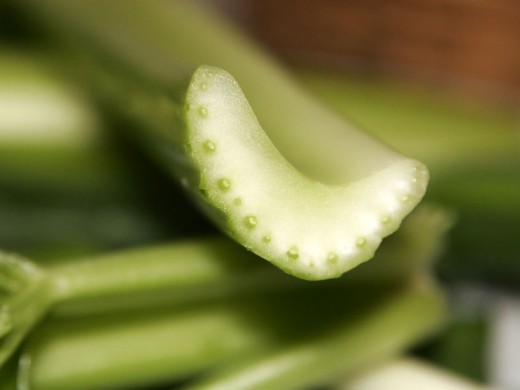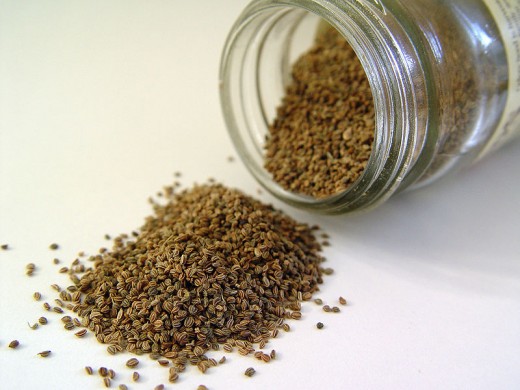What are the Benefits of Celery
Where did Celery Originate
As with many other plants it's not known with total certainty where celery originated. Literature from the Mediterranean basin describe celery (most like the "seed") as a medicine as early as 850 B.C.E.
Ayurvedic (Indian) physicians prescribed celery seed for colds, flu, water retention, poor digestion, various types of arthritis, and liver and spleen ailments. Garlands of wild, woven celery have been found in early Egyptian tombs. The Greeks around 570 B.C.E. considered the plant to have religious significance. As with a laurel wreath, a woven celery crown was awarded to winners in the Nemean games.
The Romans transformed celery from medicine and religious object to one of food.
Celery hit full domestication in the seventeenth century in Italy. The result was celery with solid stems (they were typically hollow up to this time) and milder flavors. Early growers also found that covering the base of the stems with dirt (a process called blanching) also produced milder flavors.
Almost all parts of the celery plant can be eaten with the exception of the root structure. This primarily due to toughness. The parts of the plant that are typically eaten are the stalk (raw or cooked), leaves (spice, tea, and garnish) and the seeds (actually the fruit) which are used as both a spice and medicinal.
In parts of Europe crushed celery "seed" is used to treat high blood-pressure.


Celery As Medicine
Celery seed was described as a pain reliever in 30 C.E. by Aulus Cornelius Celsus in his medical work, De Medicina. Celery seeds contain the substance apiol which of is used in the treatment of amenorrea or lack of menstruation. Apiol is toxic in high doses causing both liver and kidney damage.
Plants containing apiol were used by women of the Middle Ages as a pregnancy termination preparation. Apiol is found in fennel, dill, and parsley.
Bergamot oil is another extract of the celery "seed" and has been found useful in the treatment of psoriasis. However, because this chemical also increases sensitivity to sunlight any preparation made to be applied to the skin should be used with caution.
Large does of celery seed (or oil) should be avoided by pregnant women because both can act as a uterine stimulant.
Celery seed have also been taken as "blood purifiers" and for arthritis. These last two uses are largely "folkloric" medicine and have not scientific studies to back up the claims.
Allergies
People who are sensitive to peanuts may also be allergic to celery. The root and "seeds" of celery appear to have the highest concentrations of the allergen.
Diet
Celery has also been touted as a diet food as it has few calories (3g per 3.5 ounces) and high plant fiber. Celery "seed" is also high in calcium.
Less than Usual Celery Recipes
Braised Celery
A very simple recipe with powerful flavors.
Ingredients
- Eight (8) stalks of celery rinsed and trimmed
- Leaves from stalks above (reserve and chop)
- 1 Tablespoon (or pat) of unsalted butter
- 1 pinch of salt (kosher or sea is best)
- 1 pinch ground pepper
- 1/2 Cup of high quality beef stock
Directions
- Using a paring knife remove the tougher outer fibers on each stalk
- Cut the stalks into 1 inch diagonals
- Melt the butter in a fry pan and add the celery, salt & pepper
- Cook for five (5) minutes or until the celery just starts to soften
- Add the beef stock, stir, and cover cooked on low heat for five minutes
- Remove the cover and cook for an additional five minutes to thicken the stock
- Transfer to a plate and garnish with the reserved leaves.
For a flavor variation try adding a few Tablespoons of grated Parmesan cheese.
Steamed Celery and Apple
An interesting crunchy flavor surprise.
Ingredients
- 1 Cup Water
- 4 Cups celery diagonally sliced 1/2 inch thick
- 2 Sweet Red apples, diced
- 2 Tablespoons Dijon mustard
- 1 Tablespoon honey
- 1 teaspoon cornstarch
- 1 pinch black pepper
- 1/4 Cup walnuts, chopped and toasted
Directions
- In a skillet bring the water to a boil
- Add the celery and apples. Cook until just tender (slightly crisp). Five to eight minutes
- In a small bowl combine mustard, pepper, cornstarch and honey. Stir to mix
- Add the honey mustard mixture to the skillet and stir continuously until the liquid clears and thickens
- Add the walnuts, mix and serve





